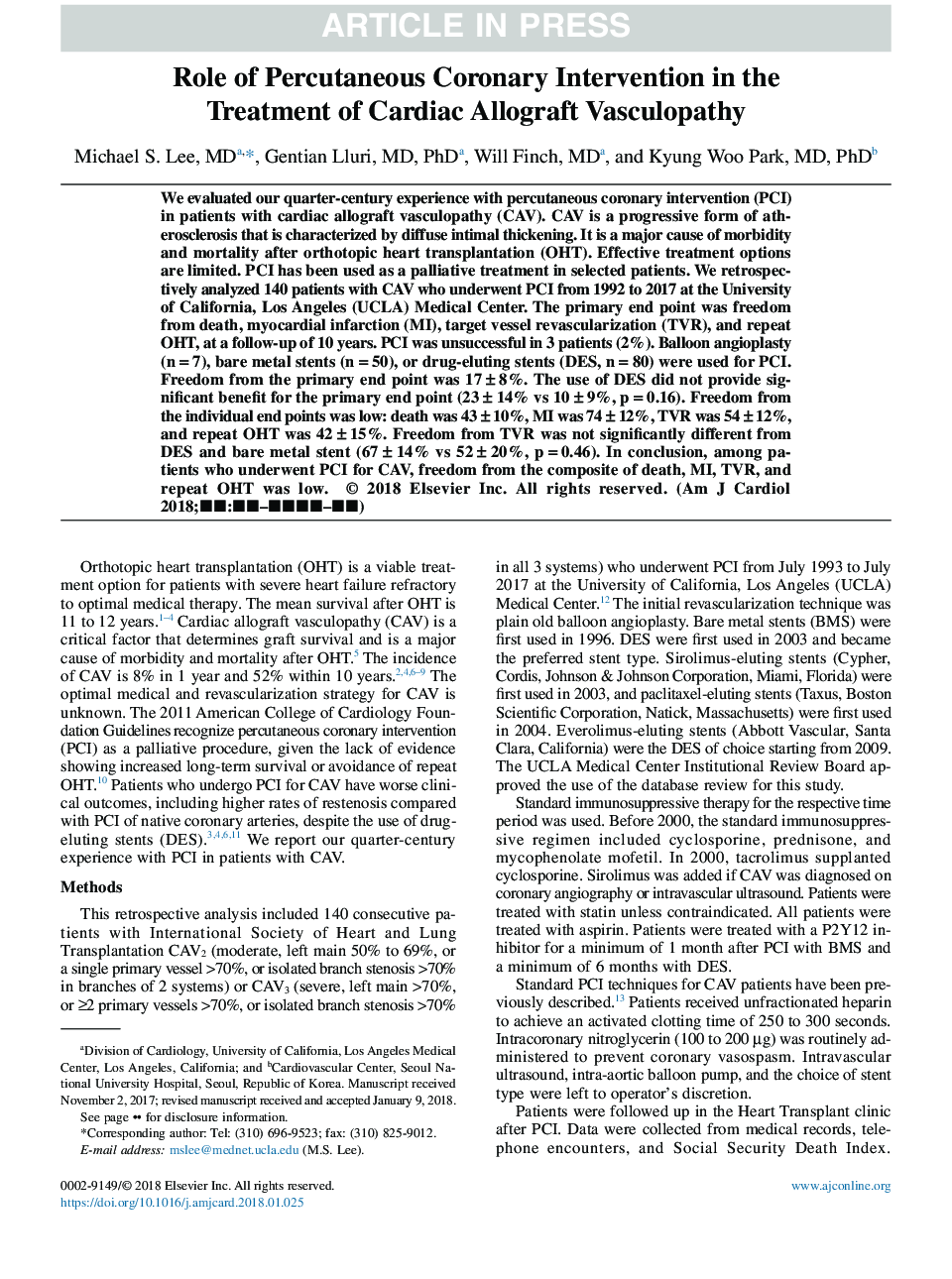| کد مقاله | کد نشریه | سال انتشار | مقاله انگلیسی | نسخه تمام متن |
|---|---|---|---|---|
| 8651305 | 1572061 | 2018 | 5 صفحه PDF | دانلود رایگان |
عنوان انگلیسی مقاله ISI
Role of Percutaneous Coronary Intervention in the Treatment of Cardiac Allograft Vasculopathy
ترجمه فارسی عنوان
نقش مداخله کرونا پوستی در درمان واسوالپاتی آلوگرافت قلبی
دانلود مقاله + سفارش ترجمه
دانلود مقاله ISI انگلیسی
رایگان برای ایرانیان
موضوعات مرتبط
علوم پزشکی و سلامت
پزشکی و دندانپزشکی
کاردیولوژی و پزشکی قلب و عروق
چکیده انگلیسی
We evaluated our quarter-century experience with percutaneous coronary intervention (PCI) in patients with cardiac allograft vasculopathy (CAV). CAV is a progressive form of atherosclerosis that is characterized by diffuse intimal thickening. It is a major cause of morbidity and mortality after orthotopic heart transplantation (OHT). Effective treatment options are limited. PCI has been used as a palliative treatment in selected patients. We retrospectively analyzed 140 patients with CAV who underwent PCI from 1992 to 2017 at the University of California, Los Angeles (UCLA) Medical Center. The primary end point was freedom from death, myocardial infarction (MI), target vessel revascularization (TVR), and repeat OHT, at a follow-up of 10 years. PCI was unsuccessful in 3 patients (2%). Balloon angioplasty (nâ=â7), bare metal stents (nâ=â50), or drug-eluting stents (DES, nâ=â80) were used for PCI. Freedom from the primary end point was 17â±â8%. The use of DES did not provide significant benefit for the primary end point (23â±â14% vs 10â±â9%, pâ=â0.16). Freedom from the individual end points was low: death was 43â±â10%, MI was 74â±â12%, TVR was 54â±â12%, and repeat OHT was 42â±â15%. Freedom from TVR was not significantly different from DES and bare metal stent (67â±â14% vs 52â±â20%, pâ=â0.46). In conclusion, among patients who underwent PCI for CAV, freedom from the composite of death, MI, TVR, and repeat OHT was low.
ناشر
Database: Elsevier - ScienceDirect (ساینس دایرکت)
Journal: The American Journal of Cardiology - Volume 121, Issue 9, 1 May 2018, Pages 1051-1055
Journal: The American Journal of Cardiology - Volume 121, Issue 9, 1 May 2018, Pages 1051-1055
نویسندگان
Michael S. MD, Gentian MD, PhD, Will MD, Kyung Woo MD, PhD,
